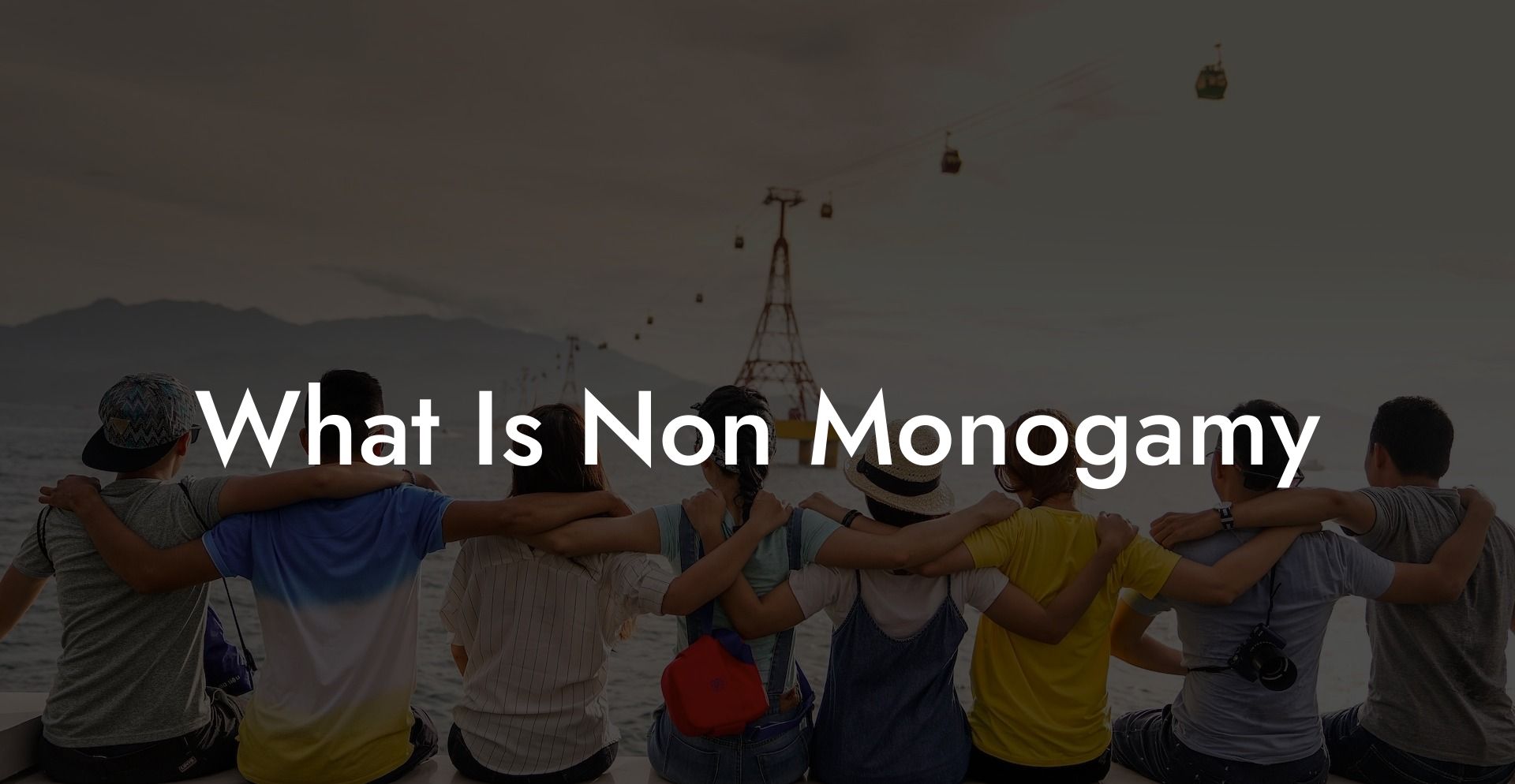Non-monogamy is a concept and practice that has gained traction in recent years, with more and more people rejecting traditional, monogamous relationships in favour of alternative romantic and sexual connections. So, what exactly is non-monogamy, and how does it differ from polyamory and monogamy? In this article, we will dive deep into the world of non-monogamy, explore its various forms, and discuss the pros and cons associated with it.
What Is Non Monogamy Table of Contents
What is Non-Monogamy?
Non-monogamy is an umbrella term for various relationship styles that do not adhere to the conventional model of monogamy, involving the emotional and/or sexual commitment to a single partner. Non-monogamous relationships can take on many forms, including but not limited to:
- Open relationships: A committed couple that allows each other to have sexual and/or emotional relationships outside of their primary partnership.
- Swinging: Sexual interactions between multiple couples, often engaged in at parties or other social gatherings.
- Polyamory: Having multiple emotionally and/or sexually committed partners at the same time, with the knowledge and consent of everyone involved.
Why People Choose Non-Monogamy
There are several reasons why people might choose non-monogamy over monogamy. Here are some common motivations:
- Desire for emotional and sexual variety
- Belief that monogamy is an unrealistic expectation for long-term relationships
- Exploration of personal identity and sexual preferences
- Opportunity to strengthen existing relationships through communication and trust-building
Benefits of Non-Monogamy
Non-monogamous relationships come with several potential benefits, including:
- Greater emotional and sexual fulfillment
- Opportunity for growth and self-discovery
- Fostering of strong communication skills
- Development of trust and emotional resilience
Challenges of Non-Monogamy
Just like any relationship style, non-monogamy comes with its own set of challenges. These can include:
- Jealousy and insecurity
- Increased risk of sexually transmitted infections (STIs)
- Difficulty managing time and emotional resources among multiple partners
- Social stigma and lack of understanding from friends and family
Difference Between Non-Monogamy and Polyamory
While both non-monogamy and polyamory involve relationships outside of the traditional monogamous model, there are some key distinctions between the two. Polyamory is a specific form of non-monogamy that emphasizes emotional connections and commitments to multiple partners, while non-monogamy encompasses a wider range of relationship styles that may or may not involve emotional commitment. Polyamory often involves relationships with multiple partners that are structured in a hierarchical fashion (e.g., primary, secondary) or non-hierarchical, with all relationships being considered equal.
What Is Non Monogamy Example:
Chris and Alex are in a committed, loving relationship and have been together for three years. However, both individuals recognize that their emotional and sexual desires go beyond being satisfied by just one person. Together, they decide to explore non-monogamy as a way to fulfill their needs while maintaining their primary relationship with one another.
After careful communication, they establish boundaries and agreements for engaging in non-monogamous relationships. Chris begins dating a mutual friend, and Alex starts attending local swinger parties. Over time, both find that they are able to explore various aspects of their sexuality and emotional desires with different partners, ultimately bringing new experiences and stronger communication skills back to their primary relationship.
Non-monogamy offers a unique opportunity for individuals to explore their emotional and sexual desires in ways that traditional monogamy might not accommodate. As with any relationship style, it is essential to communicate openly and honestly with all partners involved. If you find yourself intrigued by the prospect of non-monogamy, take the time to explore our other guides on The Monogamy Experiment to better understand this exciting and evolving world. Don't forget to share this article with anyone you think might benefit from the information!













